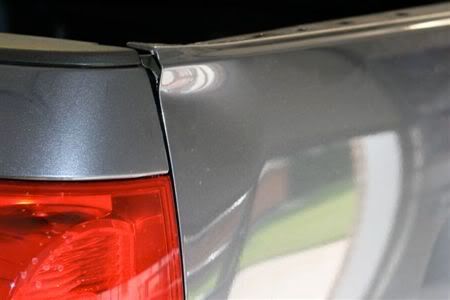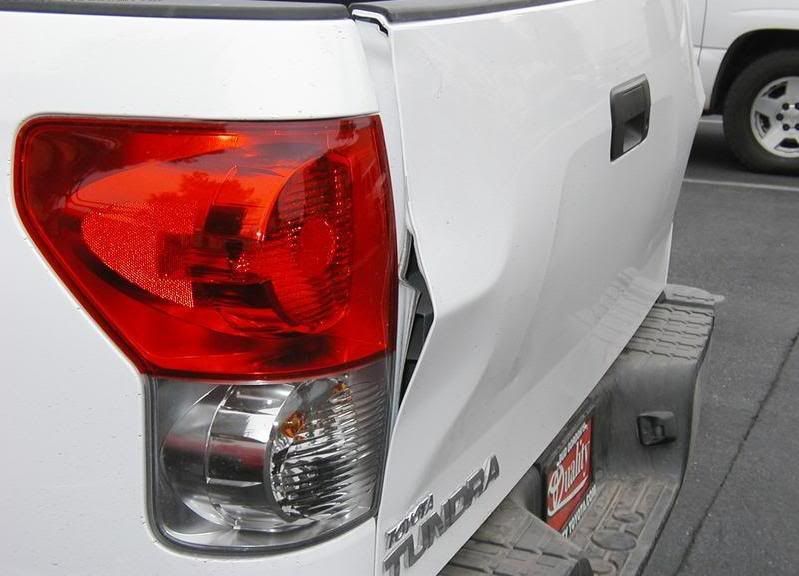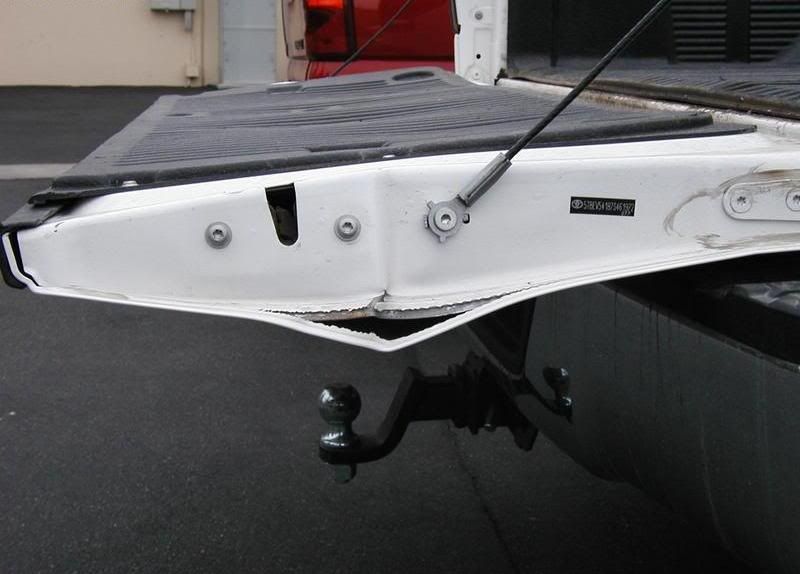At GM they call it "bed gate parallelograming" due to excessive flex causing the tailgate to be crushed at the corners by the bed sides. You see this on some older rusted bed 1970's GM and Ford trucks after the rust has rotted in critical structure areas and bed starts to flop.



The other truck has had ATVs and Golf Carts loaded into it (the white one). Golf carts are not so heavy that one axle should pretzel a tailgate. Actually you should be able to load it and haul it on the gate properly secured...not with a Toyota.


I understand that the Tundra owners manual actually warns owners not to drive with the gate down. In spite of this fact, Toyota sells bed extenders at its dealers for this truck.
Are these trucks work trucks, or for pulling parade floats?
Is the perception, that the US has about Toyota quality being superior to other auto makers, just a perception with no basis in fact?



The other truck has had ATVs and Golf Carts loaded into it (the white one). Golf carts are not so heavy that one axle should pretzel a tailgate. Actually you should be able to load it and haul it on the gate properly secured...not with a Toyota.


I understand that the Tundra owners manual actually warns owners not to drive with the gate down. In spite of this fact, Toyota sells bed extenders at its dealers for this truck.
Are these trucks work trucks, or for pulling parade floats?
Is the perception, that the US has about Toyota quality being superior to other auto makers, just a perception with no basis in fact?


